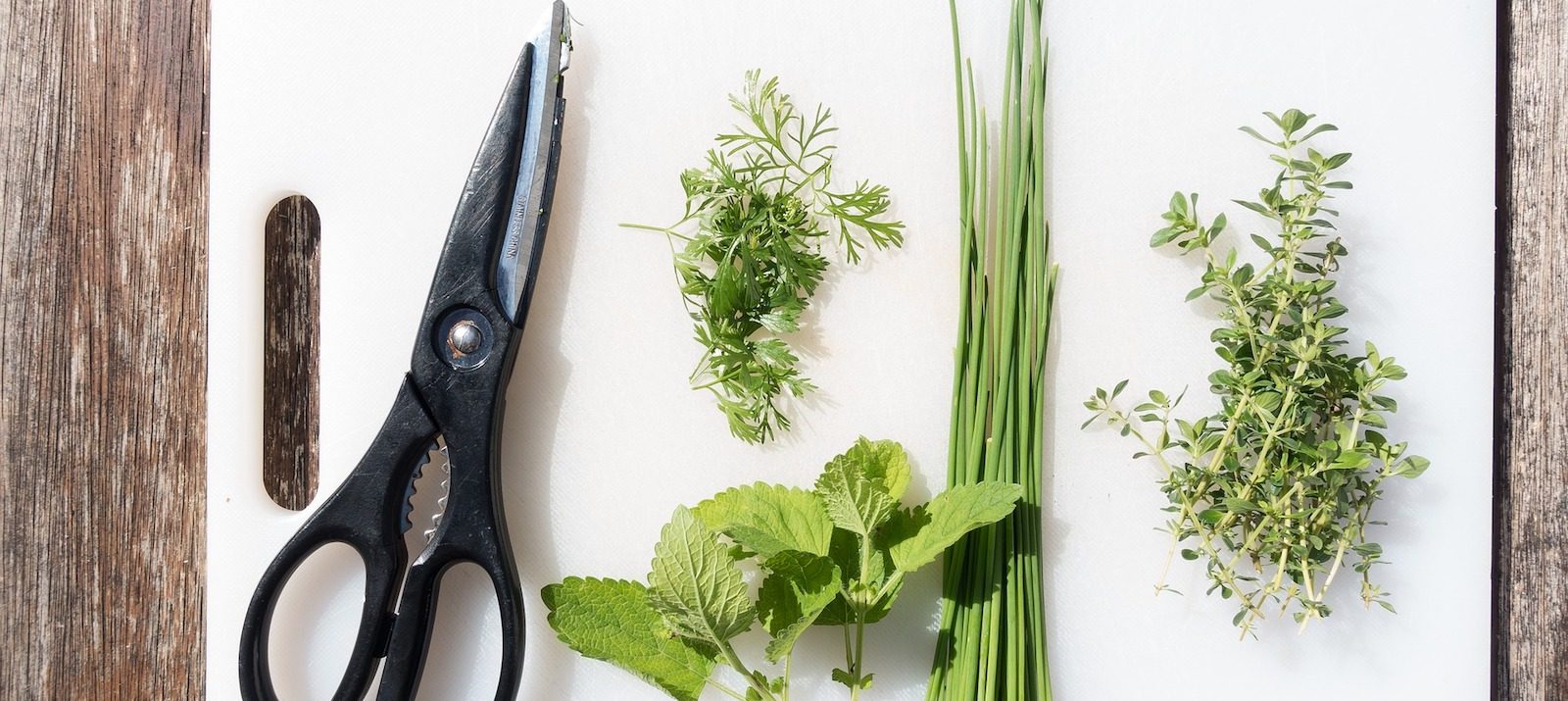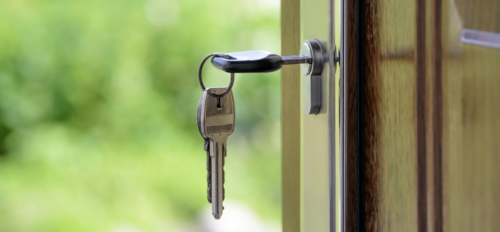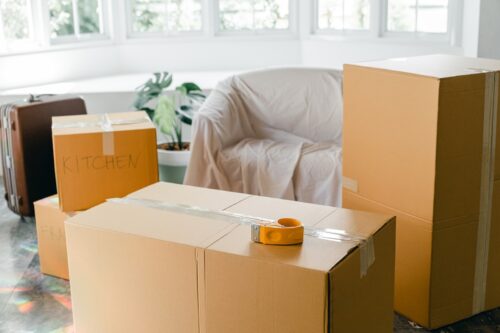When you move into a small city apartment, you let go of certain dreams:
- Pulling into a two-car garage every day after work
- Adopting a pack of Bernese mountain dogs
- Planting a perfectly manicured set of rosebushes
A full-on botanical garden might be impossible. Growing herbs indoors? Much easier to pull off.
This guide will teach you how to grow herbs indoors. You’ll master planting herbs in pots, caring for them, and harvesting your sage, cilantro, and basil when the time is right. Plus, you get to exercise your green thumb and improve your home cooking.
You may have to make a few trips to Home Depot, but your stomach will thank you.
Click any of the links below to jump to a specific section:
Indoor Herb Gardening Basics
How To Grow Basil
How To Grow Mint
How To Grow Rosemary
How To Grow Oregano
How To Grow Thyme
How To Grow Sage
How To Grow Parsley
How To Grow Cilantro
Indoor Herb Gardening Basics
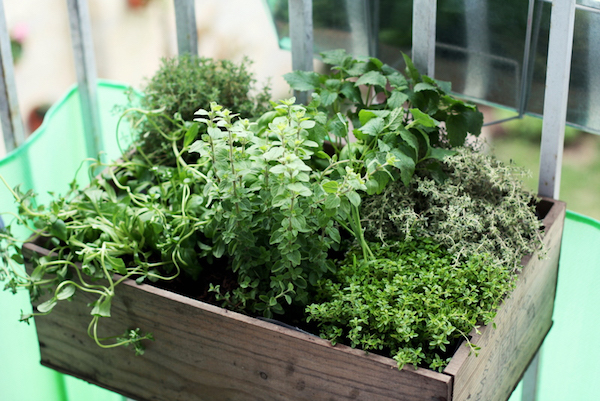
Selecting a spot for your new indoor herb garden is the most important part of the process. The plants need a place where they can get six hours of sunlight each day.
A kitchen windowsill is a great option. But as Planet Natural advises, a corner with two windows — one that faces south and one that faces west — is the best case scenario.
Have an apartment with minimal natural light?
Bump up the brightness with some fluorescent or high-intensity discharge (HID) lights, available at home improvement stores.
Free Bonus: 7 Easy Ways To Fill Your Apartment With Natural Light
Your pots should be at least eight inches in diameter — for certain herbs, even larger pots are better. And when shopping for soil, don’t make the rookie mistake of picking up garden soil. It’s too heavy for pots and not formulated for the plants that grow inside them. Get a high-quality potting mix instead.
While it’s fine to use soil straight from the bag, mixing in some compost (for added nutrients) and coarse sand (for better drainage) can work wonders.
It’s important to water your plants, but don’t go overboard. Overwatering can lead to root rot, so try to hit a happy medium. The rule of [green] thumb is to water when the soil feels dry an inch below the surface. Also, use pots with drainage holes.
Three more important pieces of advice:
- Make sure to label each of your plants.That way, you won’t accidentally add cilantro to your pesto sauce.
- Once the herbs mature, harvest carefully. Taking more than a third of the plant at once makes it harder for the plant to recover and produce new herbs.
- When it is time to harvest, do it in the morning. According to Modern Farmer, the midday sun saps the essential oils out of herbs, so it’s best to grab them while they’re still full of flavor.
So what are the best herbs to grow indoors?
Here are a few of the most common herbs, and what it takes to make each of them thrive.
How To Grow Basil
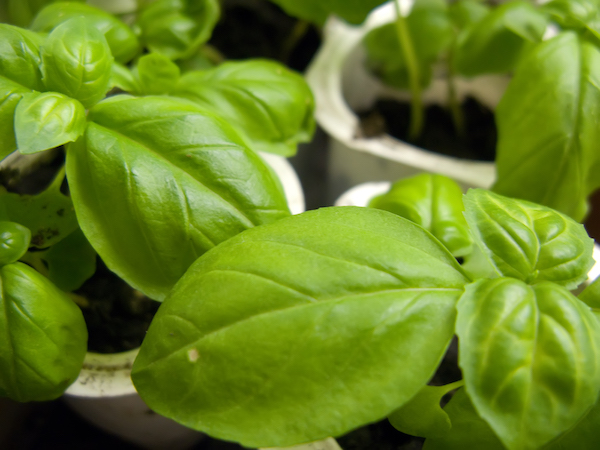
Basil is an herb garden no-brainer. You can use it in pastas, salads, pizzas, sauces, and so much more. Plus it’s very easy to cultivate at home.
Basil requires a medium-sized pot, since it usually grows to between 12-24 inches in height. Fill the pot up about 3/4 of the way with soil and lightly water it.
Then it’s time to add your seeds. The New York Restoration Project recommends spacing the seeds 2-3 inches apart on top of the soil. Once they’re settled, cover them with the remaining 1/4 of soil.
You’ll need to space your seedlings even further apart after they’ve had a chance to grow. Every now and then, snip off the tips of the plant to encourage the basil to branch out. Also, keep an eye out for flowers. You should cut those before they bloom.
As soon as your plant is in tip-top shape, pick leaves individually to suit your recipes.
How To Grow Mint
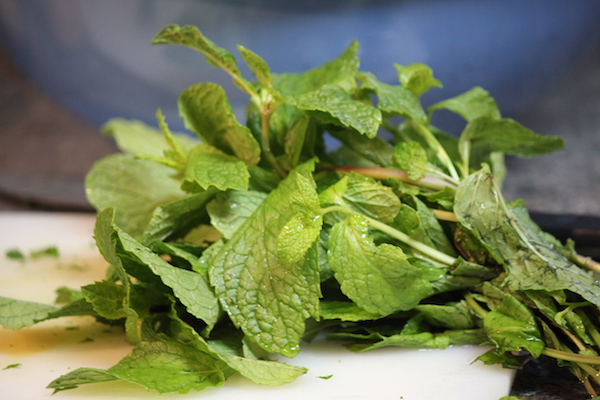
Mint is a sprawling plant, so take extra precautions to keep it contained. The first thing you’ll need to pull this off is a large, deep pot. Use one that’s 12-16 inches wide.
The Kitchn suggests you skip the seed stage and start with a more mature piece of mint. If you have a friend who’s already growing buckets of the stuff, ask him or her to cut you off a root.
Don’t have a pal with a green thumb?
Head to the farmers’ market and pick up a sprig. You can set that in a glass of water near the window and, once the roots emerge, transfer it to the pot.
Since mint grows like crazy, stay on top of your harvesting. You can pick leaves as you need them, like basil. Or your can reap most of the bounty at once by cutting the leaves at the stems. If you’re doing the latter, make sure to harvest before the whole plant flowers.
How To Grow Rosemary
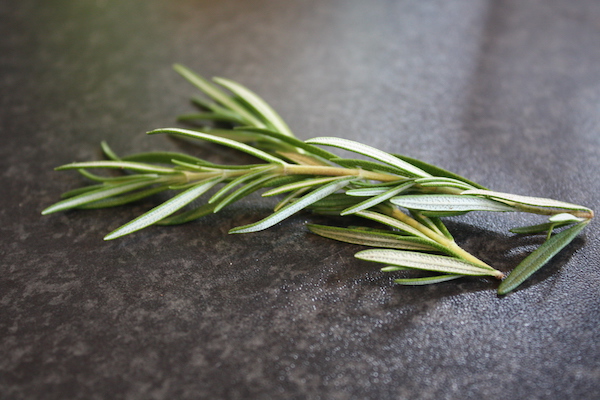
Don’t be a hero and try to grow this stuff from seed. Rosemary is very difficult to germinate. Many seeds don’t take at all, and the ones that do take their sweet time.
That’s why Gardening Know How suggests buying a small bedding plant from your local nursery. Make sure it doesn’t have any powdery mildew on it before you purchase.
Set your plant up in a pot at least 12 inches wide. Rosemary hates the cold, so put it close to sunlight. Also, don’t crowd it with too many other plants.
Because rosemary is a bit tougher than some of the other herbs on this list, you’ll need clippers to harvest it. You can take quite a bit at a time, but don’t cut the stems too low or it’ll take longer for the plant to regrow.
Although you can use fresh rosemary, eHow expert Jarrett Mann says it tastes better dried and stored:
To dry your rosemary, bundle up the sprigs and set them in a dry space like an attic or your oven. (The Kitchn suggests placing it on a parchment paper-lined baking sheet, then turning the oven onto the lowest setting.) Then, you can pull off the leaves and crumble them into a jar. Alternatively, you can pluck off all the leaves and freeze them in a Ziploc bag for later use.
How To Grow Oregano
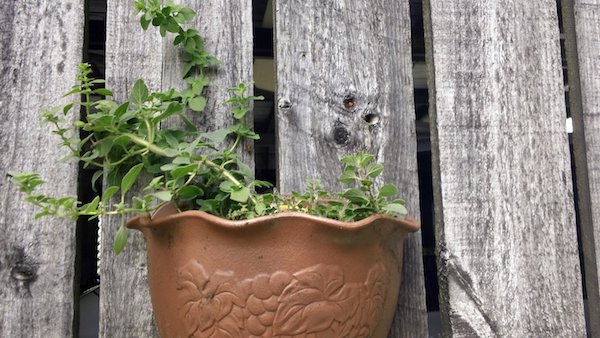
Although oregano can be grown from seeds or root cuttings, cuttings are much easier on first-timers. After you’ve set your oregano up in a pot that’s about 12 inches in diameter, keep an eye out for flower buds. As with basil and mint, those signal it’s time to harvest.
If you’re taking a big batch of oregano rather than a few leaves for your dinner recipe, cut by the stem and then hang the bunches to dry. Once dry, pick the leaves off the stems and seal them up for storage.
How To Grow Thyme
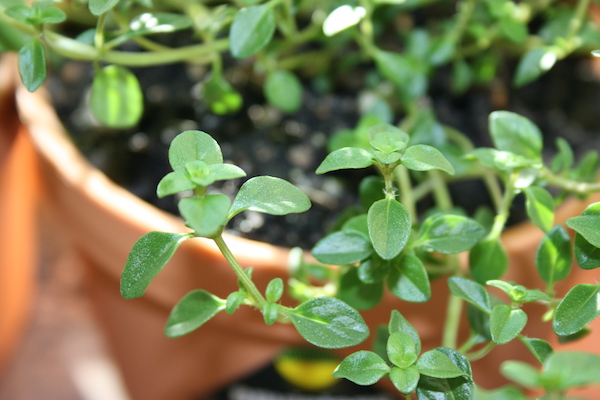
According to The Old Farmer’s Almanac, thyme seeds are tough to grow because of their slow, uneven germination. So it’s much less of a headache to start with a seedling that’s already bypassed the early stages of growth.
Water thyme frequently, and cultivate it in a sandy soil mix. When it’s grown, thyme is super simple to harvest. Just snip off whatever you want, leaving several inches on the stem so it doesn’t slow down.
If you want to use thyme fresh, grab the leaves off the stem and crumble them slightly before adding them to your recipe. If you want to use it later, hang the stems up to dry in a cool, dark spot and then pack them into glass jars.
You can also freeze thyme, though maybe not in the same way that Time Lords do. For more info, refer to Crafty’s guide on how to grow thyme indoors.
How To Grow Sage
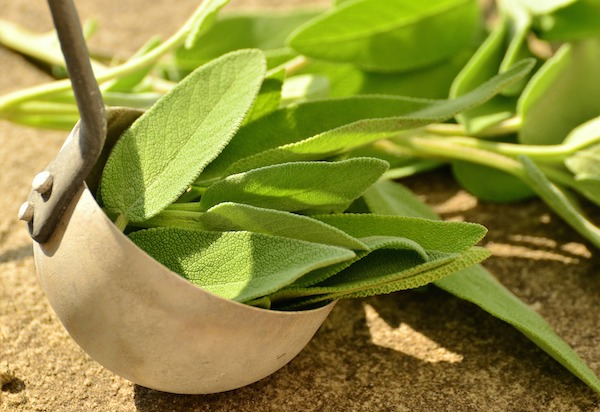
The next stop on our tour of Simon and Garfunkel’s “Scarborough Fair” garden is sage. This herb can grow up two feet tall and two feet wide, so make sure you start with a big pot.
Balcony Container Gardening recommends you keep your soil fairly dry, and supplement with fertilizer once a month during growing season.
Sage can acquire a “woody” quality after your plant hits the three or four year mark, so take cuttings while it’s in its prime. That way, you can cultivate new specimens before the current one hits retirement.
You can harvest sage leaves as you need them. But if you want to help your plant reach its highest potential, do at least two bigger hauls during its growing season. This will make the plant more rounded, and the leaves more plentiful.
How To Grow Parsley
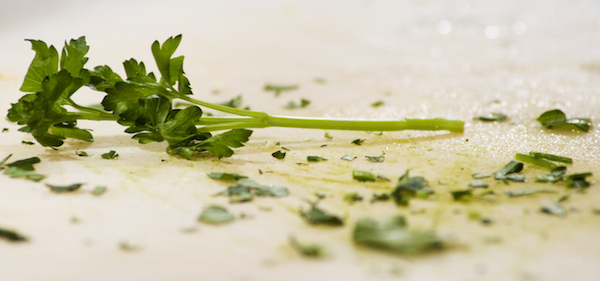
There are actually two types of parsley: curly leaf and flat leaf.
Curly leaf is much easier to chop, but flat leaf (also called Italian parsley) has a bolder flavor to it. Decide which one is best suited to your culinary needs before you proceed.
On the Green Farms recommends you grow your parsley in a gallon-size pot with a minimum depth of eight inches. It’s fine to use several seeds, since parsley has a low germination rate.
When do you harvest parsley?
Once your plant is producing leaf stems with three branches. The plant should be about six inches tall by that point. Simply take a stem or two from the lower branches to start and then build as the plant continues to grow.
While you can keep parsley going for two years before it taps out, know that the second-year yield will probably be more bitter than the first.
How To Grow Cilantro
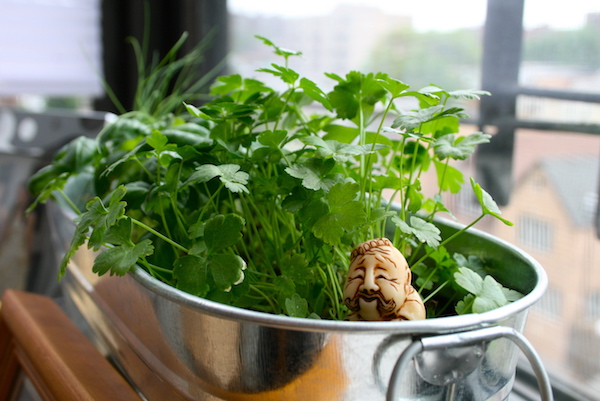
Anyone who loves guacamole (aka everyone) needs a steady stream of cilantro in their lives. This is easy to achieve. It begins with coriander seeds.
Coriander and cilantro are often used interchangeably, but there’s a slight distinction. Coriander refers to the seeds, while cilantro is the term for the plant those seeds produce. According to Den Garden, coriander has a high germination rate, so don’t plant too many in your container. Go for a medium-to-large pot, since cilantro roots run 19-23 inches deep.
The first couple leaves will look long and plain, and sometimes they stick to the seed. Don’t panic, that’s normal. Let the leaves be. The plant will straighten itself out.
When the leaves are ready to reap, it’s best to pick and use them ASAP. Unlike many other herbs, cilantro does not dry or freeze well. So get it in that guac, stat.
Clear room for your herbs with MakeSpace
It might start with a simple basil plant. But once you’ve got some thyme, oregano, and parsley in the mix, you’re going to need extra sill space for your thriving herb garden.
So what should you do with the oversized appliances or accessories that have been displaced by your sage bush?
That’s easy. Send them to MakeSpace.
After you’ve scheduled a pickup (your first pickup is free!), we’ll pick up your stuff and transport it to our secure temperature-controlled storage facility. We’ll also create an online photo catalog of your stuff so you always remember what you have in storage.
The best part:
When you want something back from storage, simply log into your MakeSpace account, select the item’s photo, and we’ll deliver it to you.
Maintaining fresh mint might not be easy, but storage has never been simpler.


